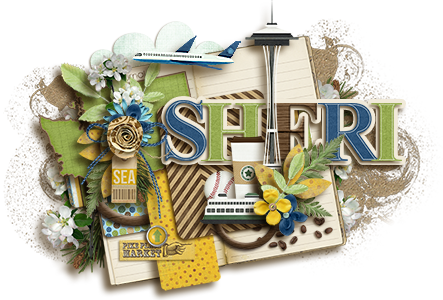|
|||||||
| View Poll Results: Which of these would help most? | |||
| Learn to shoot in manual (I will if I have to, but I'm lazy and like just changing modes on auto) |
|
6 | 46.15% |
| Get a faster prime lens (I have the kit lens [14-42mm f3.5/5.6] & a longer range zoom) |
|
6 | 46.15% |
| Buy a better flash that can be bounced |
|
5 | 38.46% |
| Multiple Choice Poll. Voters: 13. You may not vote on this poll | |||
 |
|
|
Thread Tools | Display Modes |
|
#1
|
||||
|
||||
|
I recently got a new camera (an Olympus PEN compact system camera), and for most things I love it and am getting better photos than with my point and shoot. My one frustration is with taking indoor photographs of my kids in moderate to low light. I know the camera is capable of taking them well, but it's not happening yet. Thanks!
__________________
 Last edited by rach3975; 12-01-2012 at 11:47 AM. |
|
#2
|
||||
|
||||
|
I haven't voted in your poll because it's so hard to decide where to start first with indoor photos (for me). The first thing I'd do is play around with manual mode. A lens with a lower aperture f/1.8-2.0 will definitely help capture more light. Also, bringing your shutter speed down to 1/125 to 1/160..unless you are trying to get action shots and then you might want to go up to 1/200. The lower the aperture (f) and the slower shutter speed (ex : 1/125) will let more light into the camera. Try increasing your ISO also. A flash will definitely help but you still may want some type of diffuser to evenly disperse the light on your subject.
With all of that mumbo jumbo said (lol!), it really depends on what start point you are most comfortable with. My first DSLR I immediately started on manual mode- the first thing I bought was a prime lens and then a lightscoop for the internal flash and months down the line, I decided to get a flash. I use a flash/diffuser 90% of the time indoors. |
|
#3
|
||||
|
||||
|
Thanks for all the advice and settings to try! I've already looked into lightscoops, but my current flash is removable and attaches to the hotshoe (even though it's the quality equivalent of a DSLR's pop up flash) so I can't use a lightscoop with it.
__________________
 |
|
#4
|
||||
|
||||
|
What She said ^^^
Open up your aperture (lower f number), set your shutter speed to 1/125 and then set your ISO accordingly. Get the lens with the lower aperture will help too, so you can open up more. My auto pics inside were always blurry or dark when I used my kit lens and auto, but now I can get good pictures inside (I am not afraid of raising my ISO either)
__________________
|
|
#5
|
||||
|
||||
|
LIGHT SCOOP
__________________

|
|
#6
|
||||
|
||||
|
Can you post a sample photo? I would start by adjusting the ISO up.
__________________
 |
|
#7
|
||||
|
||||
|
Well I voted for options 1 & 2 since I think a combination of both would help the most. Without using flash, you're going to have a tough time with the variable minimum aperture of that lens inside. I never use flash but I also rarely shoot above a 2.8 aperture inside unless the light is really good (like on a bright sunny day) and that's with my ISO pretty high. I'm always willing to trade grain for sharp photos but not everyone is.
I don't think you necessarily need to shoot in manual mode but you should learn how ISO, aperture and shutter speed work together so you understand what your camera is doing in auto or even P mode. I like to use Aperture Priority mode since it lets me set the aperture and then adjust my ISO based on the metered shutter speed which helps a lot in low light. It's really not about which setting you use as much as understand what's actually happening with the settings the camera chooses. |
|
#8
|
||||
|
||||
|
I'd say start with #1 because it's free and to me that would be the most practical!!! Second I'd search and google the web and Pinterest to see if you can make a diffuser for your on board flash! Then 3rd would be to purchase new lens/flash!!
__________________
Elizabeth  Blogging for Kristin Cronin-Barrow |
|
#9
|
||||
|
||||
|
I chose all three but think #1 would help and it is free (mostly if you are willing to invest time in learning and searching out tutorials)
|
|
#10
|
||||
|
||||
|
I would do 1 and 2 together. Trying to learn manual with a variable aperture lens (f number changes) is a pain. With a prime lens (fixed aperture/fixed zoom) you take a couple things out of the "equation" that help you focus on the other stuff.
Borrow a book from the library "Understanding Exposure" and read through that...it has helped a ton of people and its free. I hear a lot of folks saying use a SS of 1/125 or such...well that really depends on how your kids are: asleep/still or slightly moving (which really means moving more than you think). I was frustrated with my 50mm 1.8 lens when I first got it because I used Aperture mode and the SS dropped too low to make the exposure. Well yes I got brighter photos...but it was all blurry of my 1 year old. So my rule is: SS ALWAYS at or above 2x the focal length (ex. : 50mm lens = 1/100 unless I use a tripod/support) and for kiddos no less than 1/200 unless they are sleeping or above the age of 6 and are posing. Then I will drop down a bit. USE ISO and light to your best advantage. Available Light is another great book for borrowing that helps you understand light. It is a lot of learning, but you can do it and yes...a good piece of glass (lens) will help you a ton! Can you make your own bounce thing for flash? I know some folks have played around with white foam and such to bounce it around.
__________________

|
|
#11
|
||||
|
||||
|
Honestly, I would say learn to use your camera in manual mode first so that you know how to take proper exposure of your shots. The main reason photos come out dark or flashy is because the camera is determining the best exposure to use with auto. Unfortunately, it doesn't always work for the situation. Second, get a fast prime lens. Third, learn to use flash. A flash is not always easy to learn especially when you are bouncing light. If you do not know how to properly expose your photo (hence learning manual), then your photo taken with flash will still look like what you could get with auto. My two cents.
I use a fast prime lens right now and am planning to buy a flash unit. I learn to shoot in manual first then got a prime lens. Now, I'm branching out to wanting to use flash. Oh and PRACTICE PRACTICE PRACTICE. It's also VERY helpful to try to take a photography workshop because sometimes just reading a tutorial is somewhat okay but when someone explains it all to you, it makes sense.
__________________
 |
|
#12
|
||||
|
||||
|
Quote:
__________________
 |
|
#13
|
||||
|
||||
|
I am not a photo expert, but I have a DSLR and I bought a separate flash for inside which I turn upwards instead of towards a person. For me it works great.
__________________
Hugs, Leontine |
|
#14
|
||||
|
||||
|
Thanks, everyone. Seems like the responses are pretty evenly divided. I'll start with learning to take more control of my camera's settings and trying to DIY something to bounce or diffuse the flash, then upgrade my lens and flash when I can. I just didn't want to invest time or money in one of these options only to find out that another of them was the single most important one. It sounds like they'll all help, but the more of them I can do the better my results will be.
I put Understanding Exposure on hold at the library, but I wonder if I'll put in enough time to learn from a book. I may need to take a class to give me the push to learn it. The Katrina Kennedy class I've seen mentioned in other threads isn't being held again for a while, so I'll have to look into other options that aren't too expensive. If you have any more tips, send 'em my way! Thanks.
__________________
 |
 |
«
Previous Thread
|
Next Thread
»
|
|
All times are GMT -4. The time now is 10:14 PM.



























 Linear Mode
Linear Mode

